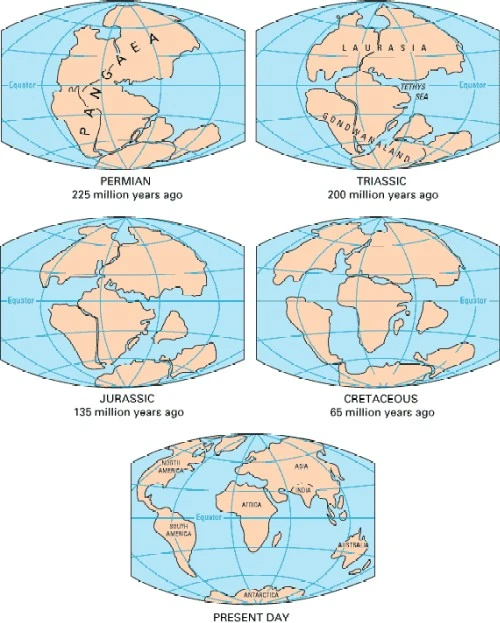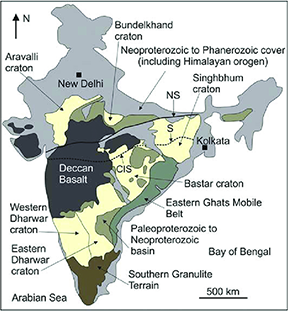Geography
Emergence of Earliest Continental Landmass
- 13 Nov 2021
- 5 min read
Why in News
A new study has suggested that the earliest continental landmass emerged 3.2 billion year ago instead of 2.5 billion years ago (as per the continental drift theory).
- The study was conducted by researchers from India, Australia and the US.
Continental Drift Theory
- Continental drift theory deals with the distribution of the oceans and the continents. It was first suggested by a German meteorologist, Alfred Wegener in 1912.
- According to the theory, all the continents formed a single continental mass- Pangea and mega ocean- Panthalassa surrounded it.
- Around 200 million years ago Pangaea started splitting and broke down into two large continental masses as Laurasia and Gondwanaland forming the northern and southern components respectively.
- Subsequently, Laurasia and Gondwanaland continued to break into various smaller continents that exist today.
Key Points
- About:
- The study has challenged the widely accepted view that the continents rose from the oceans about 2.5 billion years ago.
- It suggests this happened 700 million years earlier — about 3.2 billion years ago — and that the earliest continental landmass to emerge may have been Jharkhand’s Singhbhum region.
- Patches of the earliest continental land, however, exist in Australia and South Africa, too.
- Geological similarities have linked the Singhbhum craton to cratons in South Africa and Western Australia.
- Major Findings:
- River Channels, Tidal Plains and Beaches:
- The answer to when the first land masses were formed lay in the sedimentary rocks of the region. Scientists have found a particular type of sedimentary rocks, called sandstones.
- Later on they found the age by analysing the uranium and lead contents of tiny minerals.
- These rocks were 3.1 billion years old, and were formed in ancient rivers, beaches, and shallow seas.
- All these water bodies could have only existed if there was continental land. Thus the inference was drawn that the Singhbhum region was above the ocean before 3.1 billion years ago.
- Extensive Volcanism:
- The researchers also studied the granites that form the continental crust of Singhbhum region.
- These granites are 3.5 to 3.1 billion years old and formed through extensive volcanism that happened about 35-45 km deep inside the Earth and continued on-and-off for hundreds of millions of years until all the magma solidified to form a thick continental crust in the area.
- Due to the thickness and less density, the continental crust emerged above the surrounding oceanic crust owing to buoyancy (the quality of being able to float).
- River Channels, Tidal Plains and Beaches:
- Evolution of Organisms:
- The earliest emergence of continents would have contributed to a proliferation of photosynthetic organisms, which would have increased oxygen levels in the atmosphere.
- Weathering of the cratons would have led to nutrient runoff, supplying the ocean with phosphorus and other building blocks for early life.
- Craton are the stable interior portion of a continent characteristically composed of ancient crystalline basement rock.
- Significance:
- At a time when the entire world was debating about changes in climate, it is very important to understand how our atmosphere, oceans and climate came into existence and how they interacted with geological processes operating deep inside Earth to make our planet habitable.
- It will allow us to link the interior of Earth to its exterior in deep time.
- India has three other ancient continental fragments — Dharwar, Bastar and Bundelkhand regions. To understand their evolution the study will serve as a template for studying these other cratons.






